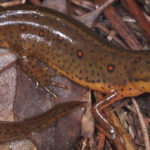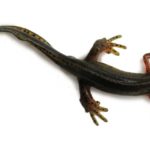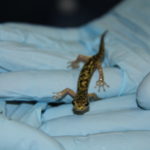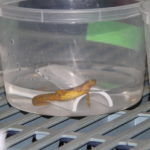
Ana Towe received second place in the Best Student Presentation category at the 71st Annual International Wildlife Disease Association Conference. She made her presentation “Impact of Batrachochytrium salamandrivorans exposure on…

Ana Towe received second place in the Best Student Presentation category at the 71st Annual International Wildlife Disease Association Conference. She made her presentation “Impact of Batrachochytrium salamandrivorans exposure on…

Master’s student and member of the Amphibian Disease Laboratory Adri Tompros has published a paper in Transboundary and Emerging Diseases.

Professor Matt Gray recently spoke on the threat of Bsal at the virtual 86th North American Wildlife and Natural Resources Conference. View the full recording on YouTube or watch below.

Mark Wilber and colleagues from the Amphibian Disease Lab have published a new paper with the British Ecological Society on amphibian pathogen resistance and tolerance.

Eastern newt populations in the northeastern United States and southeastern Canada are at greatest risk of infection with a new skin-eating fungus, Batrachochytrium salamandrivorans (Bsal), according to a study published February 18 in the open-access journal PLOS Pathogens by Matthew Gray of the University of Tennessee Institute of Agriculture, and colleagues.

In this episode of Step Outside, David Carter and Adri Tompros discuss their research on Bsal, a recently discovered pathogen that eats away at amphibian skin. Bsal has been found…

Professors Matt Gray and Deb Miller’s work in the Amphibian Disease Lab centers on preventing the spread of an amphibian pathogen, Bsal, to the United States. Bsal is currently spreading across Europe, and many fear that international pet trade will bring pathogen here. With the Appalachian region being a hotspot for salamander diversity, the Miller-Gray Lab is focused on prevention, detection, and transmission pathways for the pathogen.